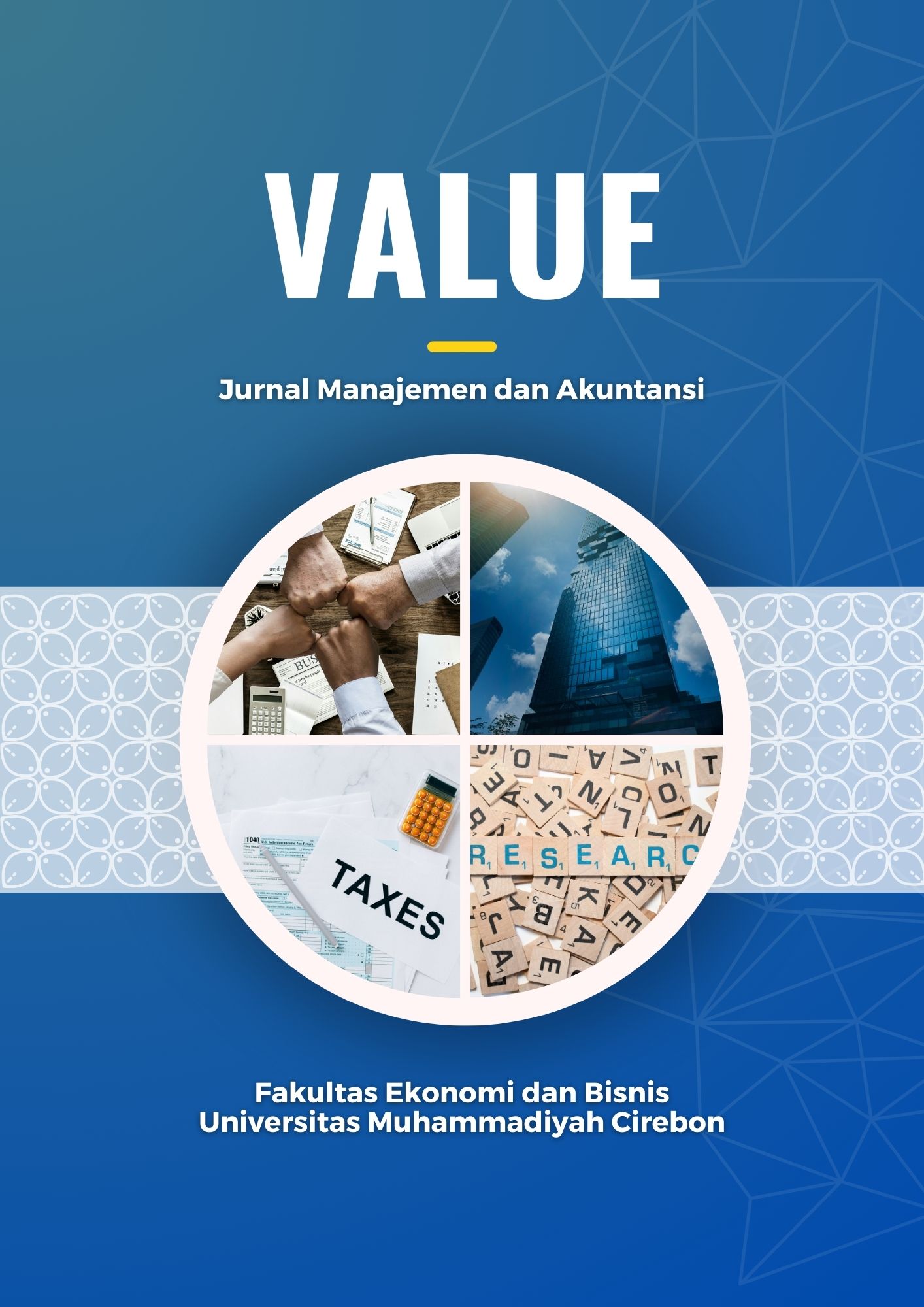Pengaruh Overconfidence, Financial Literacy, Risk Tolerance, Perceived Green Finance Terhadap Behavioral Intention
DOI:
https://doi.org/10.32534/jv.v20i2.7182Keywords:
Overconfidence, Financial Literacy, Risk Tolerance, Perceived Green Finance, Behavioral IntentionAbstract
Technological developments have encouraged the adoption of digital payment services in Indonesia, especially among women. This research aims to determine the influence of Overconfidence, Financial Literacy, Risk Tolerance, and Perceived Green Finance on Behavioral Intention in using digital payments. This research uses a quantitative approach with non-probability sampling and purposive sampling techniques. The total respondents were 384. Data were analyzed using the Partial Least Square - Structural Equation Modeling (PLS-SEM) method. The results show that Overconfidence and Financial Literacy have a positive and significant effect on Behavioral Intention, while Risk Tolerance and Perceived Green Finance have a positive but not significant effect. This finding indicates that women are more influenced by psychological factors and financial understanding when using digital payments than external factors such as risk or sustainability issues.
References
Ajzen, I. (2019). From intentions to actions: A theory of planned behavior. Organizational Behavior and Human Decision Processes, 50, 179–211.
Bank Indonesia. (2021). Statistik sistem pembayaran dan pengelolaan uang rupiah. Jakarta: Bank Indonesia.
Barber, B. M., & Odean, T. (2001). Boys will be boys: Gender, overconfidence, and common stock. https://dx.doi.org/10.2139/ssrn.139415
Chen, H., & Volpe, R. P. (2021). Gender differences in financial literacy and financial behavior: New evidence. Journal of Financial Services Research, 59(2), 213–236.
Fischer, J., & Gerhardt, M. (2020). Overconfidence influences transaction behavior in financial technology: An empirical investigation. Journal of Financial Technology, 5(3), 215–230.
Grable, J., Kwak, E. J., & Routh, A. (2020). A simplified measure of investor risk aversion. Journal of Interdisciplinary Economics, 34(1), 1–28. http://dx.doi.org/10.1177/0260107920924518
Hair, J. F., Babin, B. J., & Krey, N. (2017). Covariance-based structural equation modeling in the Journal of Advertising: Review and recommendations. Journal of Advertising, 46(1), 163–177.
Hermansson, C., & Jonsson, S. (2021). The impact of financial literacy and financial interest on risk tolerance. Journal of Behavioral and Experimental Finance, 29. http://dx.doi.org/10.1016/j.jbef.2020.100450
Kahneman, D., & Tversky, A. (2013). Prospect theory: An analysis of decision under risk. In Handbook of the fundamentals of financial decision making: Part I (pp. 99-127). https://doi.org/10.1142/9789814417358_0006
Kaur, A., & Grover, S. (2021). Understanding perceived green finance: A comprehensive review. Journal of Sustainable Finance & Investment.
Lusardi, A. (2019). Financial literacy and the need for financial education: Evidence and implications. Swiss Journal of Economics and Statistics, 155(1). http://dx.doi.org/10.1186/s41937-019-0027-5
Lusardi, A., Mitchell, O. S., Alesina, A., et al. (2006). Financial literacy and planning: Implications for retirement wellbeing. NBER Working Paper Series. http://dx.doi.org/10.2139/ssrn.1695146
McKinsey & Company. (2023). Women and digital finance: Shaping the future of financial inclusion. McKinsey Global Institute.
Otoritas Jasa Keuangan. (2022). Laporan perkembangan fintech di Indonesia.
Pal, A., Herarth, T., & Rao, H. (2020). The role of financial and security risks in mobile payment adoption: Understanding the impact on user intention. Journal of Mobile Commerce and Technology, 9(2), 115–130.
Putri, A. R., & Hidayati, N. (2023). Peran literasi keuangan dalam meningkatkan kepercayaan diri perempuan dalam penggunaan digital payment. Jurnal Ekonomi Digital dan Inklusi Keuangan, 4(1), 55–66. https://doi.org/10.1234/jedik.v4i1.5678
Satoto, S. H., & Putra, H. N. K. (2021). The effect of financial literacy and other determinants on the intention to use electronic money: Consumer behavior as a variable mediation. International Journal of Applied Business and International Management, 6(3), 23-34. http://dx.doi.org/10.32535/ijabim.v6i3.1326
Venkatesh, V., Thong, J. Y. L., & Xu, X. (2021). Unified Theory of Acceptance and Use of Technology: A review and future research agenda. Journal of the Association for Information Systems, 22(1), 10–31. https://doi.org/10.17705/1jais.00653
Villanueva, E., & Martins, I. (2022). Overconfidence, fear of failure, risk-taking and entrepreneurial intention: The behavior of undergraduate students. Tec Empresarial, 16(3), 16-33. http://dx.doi.org/10.18845/te.v16i3.6355
Wang, Y., Sun, X., & Zhang, Y. (2020). Can green finance promote green innovation in enterprises? Evidence from China. Sustainability, 12(21), 9057. https://doi.org/10.3390/su12219057
Yang, Y., Chen, Y., & Wang, L. (2021). Does green finance matter for sustainable development? Empirical evidence from emerging markets. Journal of Cleaner Production, 279, 123456. https://doi.org/10.1016/j.jclepro.2020.123456
Yulianis, N., & Sulistyowati, E. (2021). The effect of financial literacy, overconfidence, and risk tolerance on investment decision. Journal of Economics, Business, and Government Challenges, 4(01), 61-71.ISO 690. http://ebgc.upnjatim.ac.id/index.php/ebgc
Yuliyanti, R., & Mahmud, A. (2023). Perceived green finance dan inklusi keuangan perempuan dalam mendukung tujuan pembangunan berkelanjutan. Jurnal Keuangan dan Pembangunan Berkelanjutan, 5(2), 87–100. https://doi.org/10.1234/jkpb.v5i2.9876
Zakiyyah, Z., & Wahab, A. (2022). Pengaruh Literasi Keuangan, Financial Attitude, Lokasi Dan Religiositas Terhadap Minat Menabung Di Bank Syariah (Studi Kasus Pada Masyarakat Desa Sirap Juai Kab. Balangan). https://doi.org/10.61136/wye1jc11
Zhang, L. (2022). The impact of perceived green finance on sustainable investment and environmental awareness. Journal of Sustainable Finance & Investment, 12(4), 245–260.
Zhou, J & Niu, G., (2021). Risk tolerance and fintech adoption: The moderating role of gender. Journal of Financial Services Marketing, 26(3), 169–180.


















